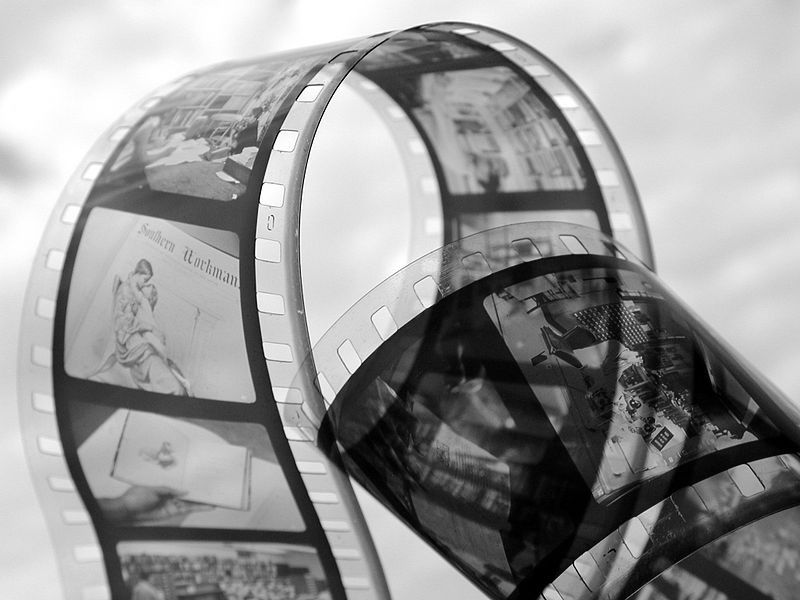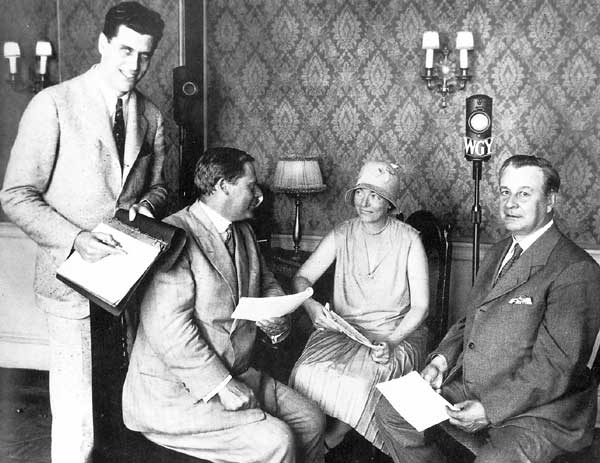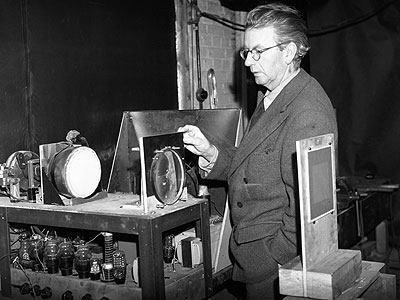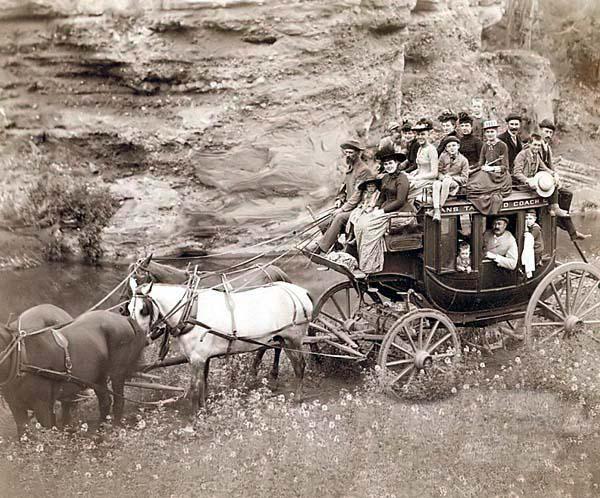Film theory is a collection of interpretative frameworks developed over time in order to understand better the way films are made and received. Film theory is not a self-contained field: it borrows from the disciplines of philosophy, art theory, social science, cultural theory, psychology, literary theory, linguistics, economics, and political science. Some of the major approaches and movements in film theory appear below.
Medium specificity: Early film theorists had two main concerns: to legitimize cinema as an art form and to identify its unique properties and effects. Hugo Munsterberg and Rudolf Arnheim considered (silent) film to be art because it does not merely mechanically record reality but rather transforms the normal ways in which the human eye perceives, through editing, camera angles, and black-and-white photography. These theorists made an attempt to understand the ways in which cinema differed from the other arts: Jean Epstein identified this difference as cinema’s photogenie; Bela Bálázs attributed it to the unique, even spiritual, expressiveness of the close-up. These concerns were revisited by later theorists such as Christian Metz.
Realism: Realist film theorists valued cinema for its ability to record reality without authorial intervention—a reversal of Munsterberg’s and Arnheim’s positions. This reversal was caused in part by the development of cinema itself, which increasingly resembled reality with the introduction of sound, deep-focus photography, and Italian neorealist aesthetics—a progression that André Bazin called the myth of total cinema. Siegfried Kracauer, a critic of authoritarian aesthetics, argued that cinema should focus on the unpredictable, unplanned events of everyday existence. André Bazin preferred films that use depth of field and long takes to emphasize mise-en-scène, preserving the spatiotemporal integrity of the scene and empowering the spectator to scan the image for meaning.
Auteur theory: This movement, initially championed by postwar critics working for the French film journal Cahiers du Cinéma, was introduced to America by Andrew Sarris. Auteurism considers the film director not merely a mechanical recorder of reality but rather a legitimate artist whose personal vision battles the institutional limitations imposed by industrial modes of film production. Influenced by romantic notions of the artist and by canonization studies in the other arts, auteurist critics hailed previously neglected Hollywood directors, such as Nicholas Ray and Samuel Fuller, as exemplary artists whose personal experiences, convictions, and obsessions imbue each of their films with an idiosyncratic style.
Semiotics and structuralism: Influenced by Ferdinand de Saussure’s theory of semiology and Claude Levi-Strauss’s structural anthropology, Umberto Eco and others tried to define film language as a set of codes and structures that organizes meaning in ways predetermined by the medium itself rather than by individual filmmakers. In analyzing narrative cinema, Christian Metz identified the presence of eight principal syntagmas—combinations of sounds and images that are organized into units of narrative autonomy. Peter Wollen, Geoffrey Nowell-Smith, and others integrated structuralism, genre studies, and auteurism into what came to be known as auteur-structuralism.
Ideology theory: Influenced by Lacanian psychoanalysis, Louis Althusser’s theory of ideology, and student revolts in France in May 1968, film scholars began to analyze the cinema as an ideological apparatus that interpellates spectators into misrecognizing their relation to the real conditions of their existence.
- According to scholars such as Jean-Louis Comolli and Stephen Heath, films elicit consent for the dominant order by giving the viewing subject the illusion of freedom and agency, naturalizing and legitimizing the existing exploitative class structure. Althusser asserted that, in order to unmask what the dominant ideology obscures, one must perform symptomatic readings that identify a text’s structuring absences and constitutive lacks. The critics atCahiers du Cinéma famously applied this type of textual analysis to John Ford’s Young Mr. Lincoln (1939).
- Writers at another French journal, Cinéthique, argued for a self-reflexive film aesthetic that would consciously make audiences aware of the devices of its own construction and the illusory nature of the film image. These critics attacked realism as a bourgeois construct that leads audiences to mistake subjective representation for objective reality.
- Apparatus theorists such as Jean-Louis Baudry claimed that film’s technological characteristics, as well as the conditions of spectatorship (such as the darkness of movie theaters and the silence and motionlessness of theater audiences), have inherent ideological effects.
Feminist film theory: Early feminist film scholars, such as Molly Haskell and Sandy Flitterman-Lewis, focused on stereotypes of women in Hollywood and art cinema and drew attention to previously neglected women filmmakers. Later scholars sought to describe thepatriarchal dynamics of cinematic spectatorship. Laura Mulvey argued that classical Hollywood films invite a masculinist gaze that aligns itself with active male characters and voyeuristically looks at or fetishizes passive female characters. According to Mary Ann Doane, female spectators have few options: they may either empower themselves (at the expense of their gender) by identifying with the male protagonist or identify (masochistically) with the female victim. Feminist theorists encouraged women filmmakers to create alternative film aesthetics, which Claire Johnston said should channel female desire, Laura Mulvey said should destroy spectatorial (and hence sexist, patriarchal) pleasure, and Luce Irigaray said should be based on the unique properties of the female body and feminine subjectivity.
Cultural studies: Cultural studies scholarship goes beyond apolitical investigations of medium specificity and film language and tries to situate film texts within broader social, cultural, political, and industrial networks of power. Rejecting previous theorists’ high-art elitism and blindness to racial and sexual difference, cultural scholars consider all aspects of popular culture (such as daytime television, punk clothing, and hip-hop music) as valid objects of study. Unlike apparatus theorists, cultural scholars like Stuart Hall argue that spectatorship is an active process of textual decoding. Cultural studies is often concerned with the demographics and sites of cinematic spectatorship, revealing how certain groups in certain reception contexts and historical moments are capable of reading films subversively, against the grain of their dominant ideology. This approach has led to a proliferation of queer, feminist, and racial reinterpretations of classical and contemporary Hollywood films.
Cognitive theory: In contrast to psychoanalysis, cognitive film theory tries to understand how audiences interpret films in terms of rational, conscious processes. Using Russian formalist terminology, David Bordwell divides narrative into the syuzhet (the order in which the narrative events are presented) and the fabula (the actual chronological order of events). According to Bordwell, spectators use the syuzhet to reconstruct the fabula in their minds—an example of how meaning is created through cognitive rather than emotional or unconscious processes. Cognitive theory assumes that perception and cognition are universal human characteristics, so it does not take cultural or historical differences into account. This approach puts weight on intellectual rather than emotional aspects of watching film.
Credits: Sparknotes



![The First Phone Call [Video]](https://gaukantiques.com/wp-content/uploads/2013/03/alexander_graham_bell_500px.jpg)







